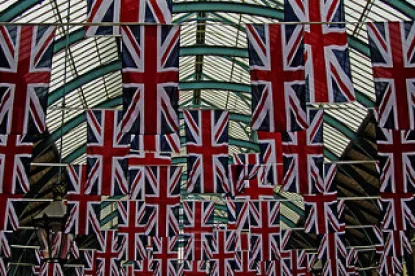This note provides an overview of the various trade models that could potentially govern UK-EU trade following the UK’s withdrawal from the EU. It is designed to assist businesses in identifying the legal issues to consider and address in response to the UK's referendum vote of 23 June 2016 to withdraw from the European Union.
Timing of Brexit
The UK has not left the EU. It will remain a member of the EU, and EU law will continue to apply in its territory, for some time.
Before exiting, the UK needs to go through the exit procedure set out in Article 50 of the Treaty on European Union, starting with notification to the European Council of its decision to leave the EU. The new UK Prime Minister, Theresa May, appointed on 13 July 2016, has clearly stated that, while “Brexit means Brexit”, there should be no rush to serve the Article 50 notification. Following their recent discussions with Mrs May, German Chancellor Angela Merkel and French President François Hollande have both accepted that the UK needs time to prepare for exit negotiations, although they have also stressed that the UK's Article 50 notification should not be unduly delayed as this would not be in the interests of the EU or UK economies.
While the situation remains fluid, it is expected that the next few months will see the UK establishing its preferred negotiating position on the terms of its exit from the EU and its preferred model for its future relationship with the EU, with notification occurring in early 2017. When the notification is made, it will trigger a two-year, extendible period of negotiation with the EU on the UK’s terms of exit only. At this time, it is not clear whether negotiation of new arrangements with the EU will be conducted in parallel, or at a later stage. It also remains unclear whether the new arrangements will be finalised and ratified in time for them to come into force as soon as Brexit occurs.
Whether or not there will be parallel negotiations, Article 50 requires the UK’s exit terms to take into account the framework of the UK’s future relationship with the EU. Although the level of detail required is unclear, this means that the UK government must determine at least a broad outline of its preferred post-Brexit UK-EU trade model. It is unlikely that the government would wish to embark on the Article 50 negotiations without this, and Mrs May has indicated that the UK’s position will be made clear by early 2017.
Mrs May has also stated that the Government should be “[…] driven by what is in the best interests of the UK and what is going to work for the European Union, not by the models that already exist”, suggesting that the new UK-EU arrangement could be entirely different from any of the EU’s other arrangements. This statement is likely to reflect the UK’s aim of preserving access to the EU Single Market, while restricting the freedom of EU citizens to settle and work in the UK. Whether or not the UK opts for a novel arrangement, however, the trade models currently used by a number of non-EU states to trade with the EU provide a good indication of what might be achievable for the UK.
Each existing trade model is often described by reference to the country that is a counterparty to the relevant trade agreement with the EU. The main options are set out below:
-
The “Norwegian model” – EEA: By virtue of its membership of the European Free Trade Association (EFTA), Norway is one of the three EFTA Member States (Iceland, Liechtenstein, and Norway) that are parties to the Agreement with the EU and each of the 28 EU Member States to create the European Economic Area (EEA), which extended full access to the EU’s Single Market to the EEA EFTA States from 1994.
In return for this access, the EEA EFTA States are obliged to contribute to the EU budget and implement all EU Single Market legislation, including the so-called “four freedoms” that underpin the Single Market (the freedom of movement of goods, persons, services, and capital). Horizontal measures relating to the four freedoms are set out in the EEA Agreement. It also includes horizontal provisions relevant to the four freedoms which constitute the legal basis for incorporating EU legislation on social policy, consumer protection, the environment, statistics and company law, and other areas into the EEA Agreement. The EEA Agreement also covers cooperation outside the four freedoms in so-called “flanking” areas. In the flanking areas, cooperation is carried out through common efforts to encourage certain activities in the EEA by the participation by the EEA EFTA States in EU programs, and the establishment of joint activities in specific areas.
The EEA Agreement does not cover agriculture and fisheries and does not prevent the EEA EFTA States from entering into free trade agreements with non-EU states, as they are outside the EU Customs Union and the Common Commercial Policy.
Because Norway is a member of the EU Single Market but not a member of the EU Customs Union, Norway must apply complex “rules of origin” to its exports to the EU, ensuring that they have been substantially made in Norway rather than imported from another country, e.g., China, and then re-exported to the EU. Because Norway mainly exports primary products to the EU, this legal obligation does not pose much difficulty for Norway. If the UK should become, like Norway, a member of the EU Single Market but not of the EU Customs Union, then the UK would have to comply with the same “rules of origin” for its exports to the EU of both goods and services. In contrast with Norway, this could become a complicated process for the UK. The goods exports of the UK are complex and include many imported inputs as part of global production chains. The financial and other services exports of the UK could likewise face hurdles due to the complexities of these origin rules.
The UK is currently a signatory of the EEA Agreement, but in its capacity as an EU Member State. In order to secure Single Market access by adopting the Norwegian model, the UK would need to exit the EU, seek the consent of all four EFTA Member States (including Switzerland) to its re-admittance to EFTA (having left in 1973 to join what is today the EU) and then apply for consent of the EEA EFTA States, the EU, and the remaining 27 EU Member States to become a party to the EEA Agreement as an EFTA Member State.
-
The “Swiss model” – a series of bilateral agreements: While Switzerland is an EFTA Member State, it has never ratified the EEA Agreement. As a result, it does not benefit from the same general access to the EU’s Single Market as the other three EFTA Member States do. Instead, Switzerland has entered into an array of over 100 bilateral agreements with the EU that, on a sectoral basis, broadly seek to replicate access to the EU’s Single Market insofar as trade in goods is concerned. Switzerland has much more limited access to trade in services. Importantly, while the Swiss-EU arrangements are set out in separate agreements, the key agreements contain so-called “guillotine” provisions enabling the EU to terminate all trade agreements if one of them is terminated by Switzerland.
Switzerland is outside the EU Customs Union and the Common Commercial Policy and can, therefore, enter into free trade agreements with non-EU states. In return for its partial Single Market access, Switzerland is required contribute to the EU budget and implement significant volumes of EU Single Market legislation into its domestic legal system, including the unlimited rights of EU citizens to live and work in Switzerland.
In the latter context, it should be noted that in 2014 the Swiss electorate narrowly voted in favour of imposing limits on the free movement of EU citizens in Switzerland. The Swiss government is under a domestic legal obligation to implement the result of that referendum by February 2017. While further talks are scheduled for September 2016, the lack of progress made by the Swiss government in its efforts to negotiate a compromise with the EU, thereby avoiding having to choose between either losing access to the EU’s Single Market or disregarding its legal obligation to implement the referendum result, is indicative of the high stakes and difficult choices the UK will likely face in its negotiations with the EU.
In order to adopt the Swiss model, the UK would need to negotiate separate bilateral agreements with the EU with the aim of replicating access to the EU’s Single Market after Brexit.
-
The “Turkish model” – customs union membership: Turkey and the EU have been linked by a customs union agreement since 1995 (the EU-Turkey Customs Union). In return, Turkey is under an obligation to align its external tariffs with those of the EU vis-à-vis non-EU Member States. It is also obliged to provide access to the Turkish market to any country that has entered into a free trade agreement with the EU on the same terms as those granted to that country by the EU. Any such countries are not, however, obliged to provide market access to Turkey on the same terms.
As a result of the EU-Turkey Customs Union and subsequent agreements, Turkey enjoys access to the EU’s Single Market as far as goods and processed agricultural products are concerned. In return, it is required to implement EU Single Market legislation in several essential areas, most notably with regard to industrial standards. Turkey does not have Single Market access for services and unprocessed agricultural goods.
While Turkey is not part of the EU’s Common Commercial Policy, which provides the EU with exclusive competence to negotiate free trade agreements on behalf of the EU Member States, its ability to enter such agreements with non-EU states is limited by the fact that the EU-Turkey Customs Union requires alignment of Turkey’s external tariffs with those of the EU.
The attractiveness of the Turkish model to the UK is likely to be limited due to the UK’s desire to negotiate free trade agreements with a number of non-EU states.
-
The “Canadian model” – free trade agreement: Canada has recently entered into a Comprehensive Economic and Trade Agreement (CETA) with the EU. If and when it comes into force, it will, over time, provide Canada with tariff-free access to the EU’s Single Market for industrial and most agricultural goods. CETA also aims to eliminate a number of non-tariff barriers to trade, such as quotas and certain subsidies. Access to the EU’s Single Market in services, however, will be much more limited for Canadian companies.
CETA’s designation as a “mixed agreement” means that – on the EU side – it needs to be ratified by the relevant EU institutions, all national Parliaments of the EU Member States, as well as a number of regional assemblies in certain EU Member States. Given the large number of approvals needed and significant opposition in a number of EU Member States, some commentators say that it is doubtful whether CETA will ever enter into force. However, others have suggested that the “non-mixed” parts of CETA (those areas that fall within the exclusive competence of the EU) may be brought into force pending ratification by the EU Member States of the “mixed” parts.
Replicating the Canadian model would involve the UK entering a free trade agreement with the EU. The precise scope of any such agreement would be subject to negotiation, but the UK’s rights and obligations under it are likely to be fewer than under the EEA Agreement. Any UK-EU agreement would also likely be a “mixed agreement” and encounter ratification hurdles similar to those encountered by CETA.
-
The “WTO-only model”: Under this model, the UK would not enter into any type of agreement with the EU for preferential access to the EU’s Single Market. Instead it would trade with the EU on the same terms as it trades with all other WTO members.
In this context, it should be noted that, while the UK was a founding member of the WTO and will remain a member of the WTO following Brexit, the terms of its trade with the other 161 WTO members (e.g., specific tariff concessions such as maximum tariff levels) are currently intertwined with its membership of the EU. To enable it to trade under these rules post-Brexit, it will therefore likely need to renegotiate the concessions it offers to each of the other WTO members, as well as those offered by the other WTO members to the UK.
This situation is unprecedented in the WTO. It raises some fundamental issues relating to the legal structure of WTO obligations. These factors may complicate the negotiating process for the UK with other WTO members. There are unanswered questions as to when the WTO renegotiating process should start and how long it should take. There is also the possibility that, in exchange for the continuation of current WTO trade arrangements, the UK may be asked to make concessions to other WTO members in a number of sensitive areas of manufacturing, agricultural, and services trade beyond those the UK has already made.
The below table summarises the key features of each of the above trade models.
Conclusion
The full implications of the UK's withdrawal from the EU are still being worked through and they will depend to a great extent on the model chosen by the UK for its future relationship with the EU and the EU exit arrangements. Those choices will be heavily influenced by the new UK prime minister, but also heavily negotiated by the EU. Until there is greater clarity and certainty, businesses should continue to monitor developments, identify those areas where their businesses are likely to be affected by new or amended legislation and regulation – and, importantly, those areas that are unlikely to be affected – and determine how to mitigate risks in affected areas.





 />i
/>i
